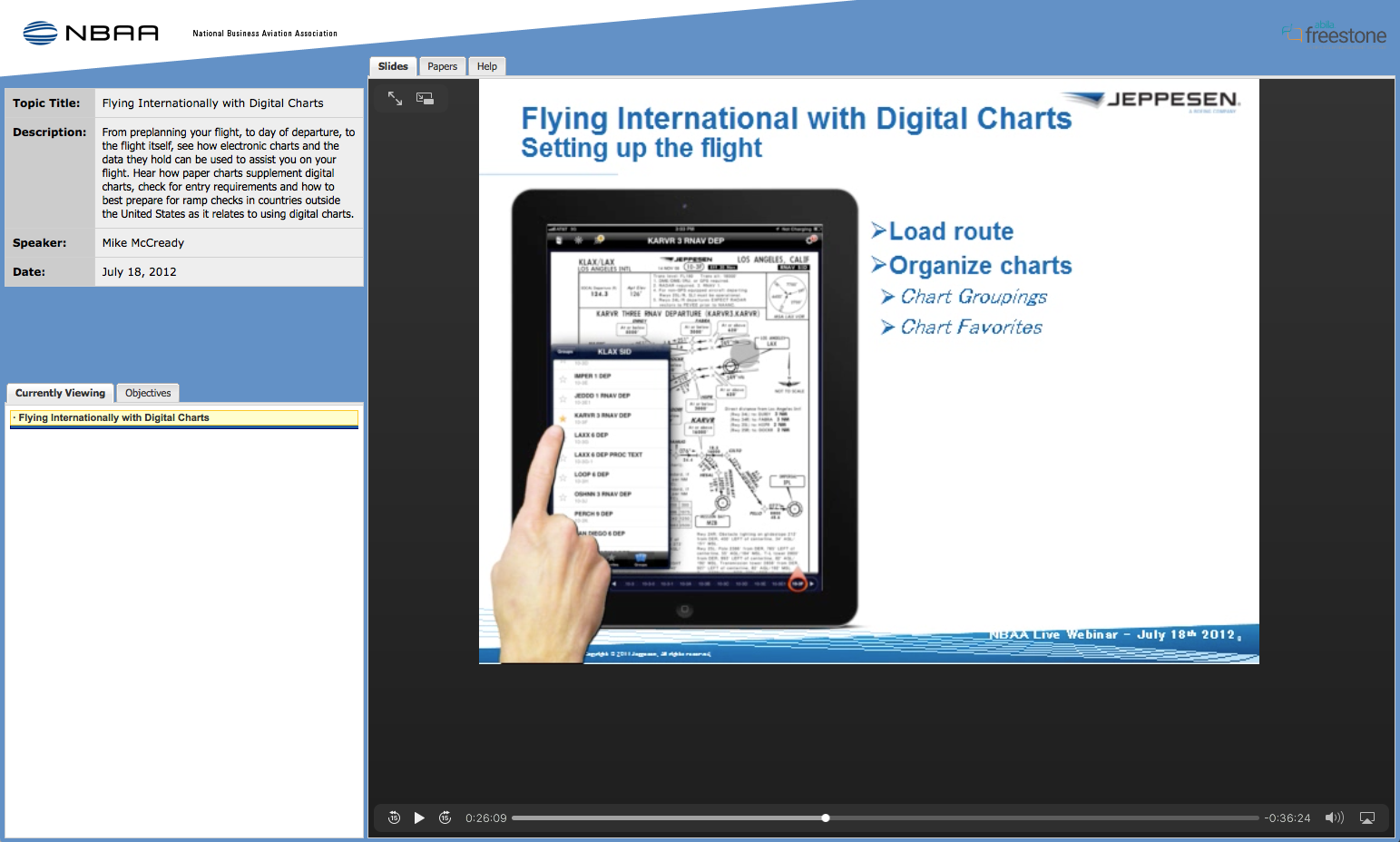
July 23, 2012
A record number of participants – more than 300 Members – took part in a free NBAA webinar July 18, which discussed international flights using digital charts.
The third in a series, Jeppesen sponsored and presented the hour-long session “Flying Internationally with Digital Charts,” which focused on the Mobile FlightDeck, the company’s iPad electronic flight bag (EFB) app, said moderator Jo Damato, NBAA director of educational development & strategy.
On a hypothetical flight from Los Angeles, CA to Saul Paulo, Brazil, with a stop in Brasilia, Mike McCready, Jeppesen’s senior manager of global sales for business aviation, led the participants through every step of the process, from pre-flight planning and preparation, to upcoming ICAO flight plan changes and ramp checks.
Thatch VandenBergh, a software engineer and regulatory liaison, and John Burgen, an international flight planning specialist, addressed their specialties, and Bill Waters, a long-time Gulfstream pilot who’s flown the world with digital charts, offered his first-hand experiences.
Before planning the flight, McCready presented an overview of the FAA’s EFB approval process, adding that Jeppesen has created a “starter kit” that leads certificated operators (such as FAR Part 135 air carriers), through the five-step process that takes, on average, six months. While Part 91 operators do not need specific FAA authorization to utilize EFBs, many of the steps in the Jeppesen starter kit are still helpful. In a mid-webinar survey, roughly 90 percent of the participants already use digital charts. Approximately half the 300 participants were “91 other” operators, a third operated under 91F, 6 percent were 121/135, and the remainder were non-operators.
Jeppesen chose Brazil because it has some idiosyncratic requirements, such as preferred routes, and others that will reach around the globe when ICAO’s new flight planning system goes online later this year. The new requirements include automatic dependant surveillance hexadecimal modifiers and separate performance based navigation modifiers for each flight segment, oceanic, en-route, terminal, and final. Webinar slides included the new codes and a table showing their applicability.
Burgen said pilots would be able to log onto ICAO’s new flight plan system and try it out with sample flight plans. He recommended that all operators update their databases by Aug. 31, so they would be ready for ICAO’s full-scale implementation on Nov.15.
A quick tour of the iPad EFB with Mobile FlightDeck outlined how to efficiently plan and execute a flight, organizing charts and information in groups or “favorites,” and how to immediately find frequencies and data for the applicable flight information region, and how to quickly alternate between a chart and airway manual reference with a “three-finger swipe” (if the iPad uses iOS 5 or better). When addressing ramp checks, the presenters discussed strategies, by type of operation, for verifying EFB authorization and the currency of the digital charts employed.
View the recorded webinar “Flying Internationally With Digital Charts.”
For additional recorded webinars, visit NBAA’s On-Demand Education portal.


 International Business Aviation Council Ltd.
International Business Aviation Council Ltd.